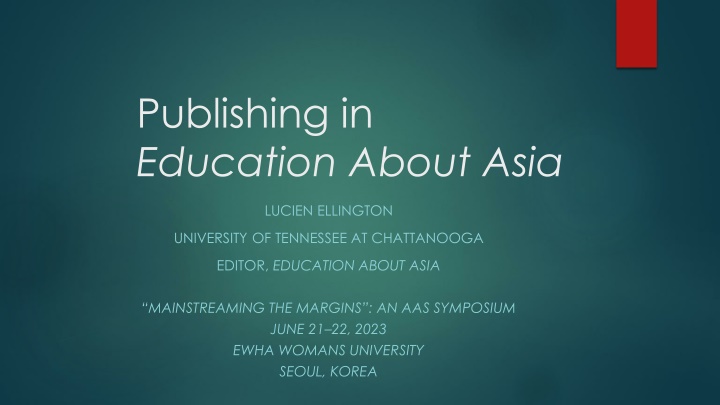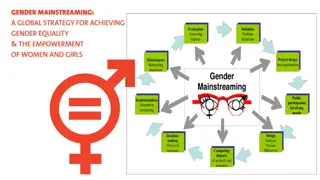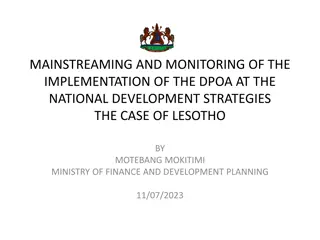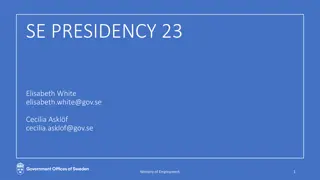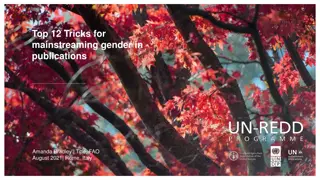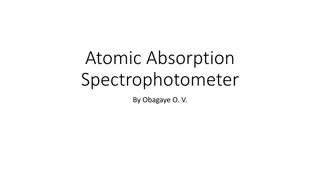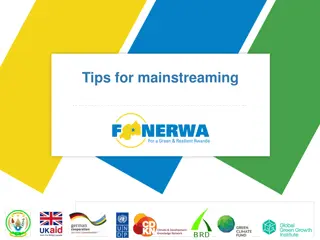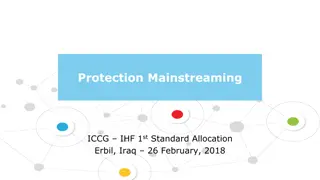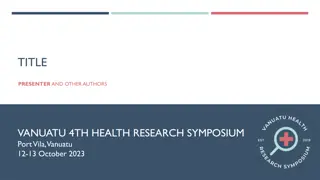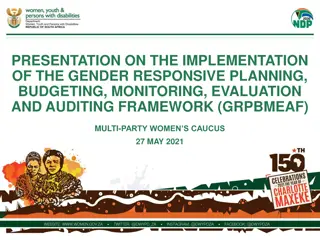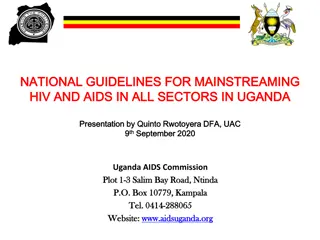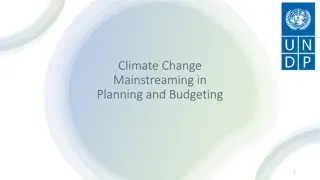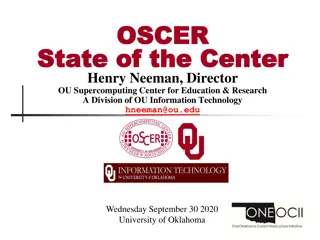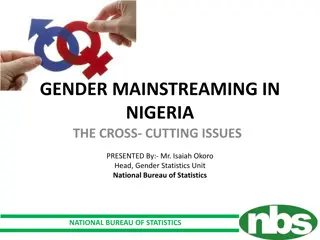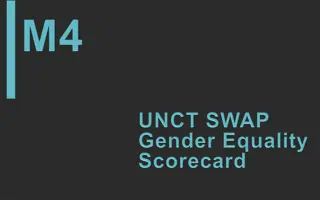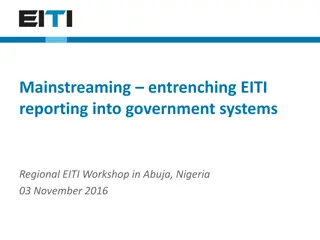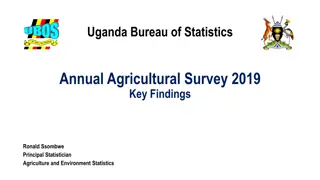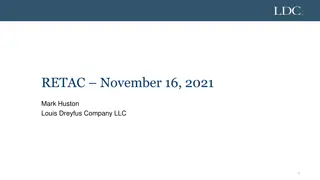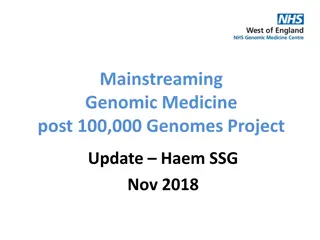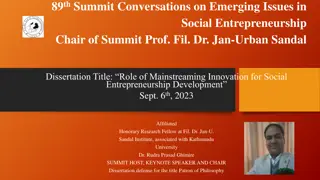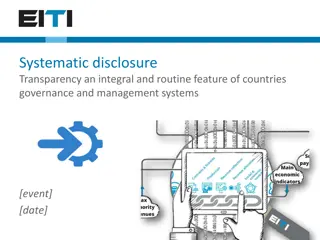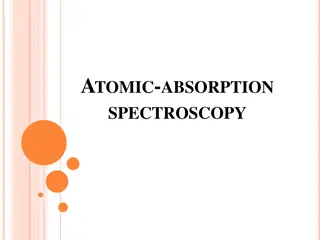Mainstreaming the Margins: AAS Symposium 2023
The Education About Asia (EAA) publication by Lucien Ellington at University of Tennessee at Chattanooga offers insightful articles on Asian studies. EAA aims to integrate the study of Asia into courses, catering to AAS members, educators, and professionals. With a rich history and global readership, EAA encourages accessible writing and provides valuable resources for teaching. Peer-reviewed and widely recognized, EAA serves as a vital platform for sharing knowledge and promoting understanding of Asian cultures and issues.
Download Presentation

Please find below an Image/Link to download the presentation.
The content on the website is provided AS IS for your information and personal use only. It may not be sold, licensed, or shared on other websites without obtaining consent from the author.If you encounter any issues during the download, it is possible that the publisher has removed the file from their server.
You are allowed to download the files provided on this website for personal or commercial use, subject to the condition that they are used lawfully. All files are the property of their respective owners.
The content on the website is provided AS IS for your information and personal use only. It may not be sold, licensed, or shared on other websites without obtaining consent from the author.
E N D
Presentation Transcript
Publishing in Education About Asia LUCIEN ELLINGTON UNIVERSITY OF TENNESSEE AT CHATTANOOGA EDITOR, EDUCATION ABOUT ASIA MAINSTREAMING THE MARGINS : AN AAS SYMPOSIUM JUNE 21 22, 2023 EWHA WOMANS UNIVERSITY SEOUL, KOREA
Education About Asia (EAA) EAA, in its 28th year of consecutive publication, is the peer-reviewed teaching journal of the Association for Asian Studies. Three print issues are published annually, and our online archives receive high amounts of traffic over 300,000 visitors used our archives in 2022. Our mission is to assist professors and teachers to integrate the study of Asia into their courses. https://www.asianstudies.org/publications/eaa/
Education About Asia (EAA) Our readership primarily consists of AAS members in colleges and universities who have an interest in teaching introductory survey courses (approximately 50 percent), and secondary school teachers with an interest in Asia (approximately 50 percent). Undergraduate college and university instructors and secondary school teachers often assign EAA articles and essays to their students. EAA readers include North American teachers and professors with little or no expertise in Asian Studies who participate in professional development workshops. Because of the popularity of the EAA archives, employees in organizations not directly or exclusively involved in education such as the Associated Press (AP), the United Nations, most probably public libraries, and at least two think tanks have utilized EAA articles.
Education About Asia (EAA) Scholars, educators, public policy experts, journalists, and filmmakers have all been published in EAA. Since many of our readers are non-specialists, most of our articles are introductory overviews, and we encourage contributors to write as they might for a periodicals such as The Atlantic, The Economist, or The Wall Street Journal, rather than for a typical scholarly journal. It is important to keep in mind that EAA manuscripts need not include cutting edge scholarship but should be accurate introductions to important topics or events.
Education About Asia (EAA) Since its inception, EAA has utilized a blind-peer review process with two external referees reviewing manuscripts considered for publication as feature articles, and one external referee (along with the editor) assessing manuscripts considered for publication as teaching resource essays. The vast majority of institutions of higher education recognize successful publication in EAA as important in the tenure and/or promotion process.
Suggestions for publishing in EAA Grammar Reference Sheet: Run-On Sentences* *University of Tennessee at Chattanooga (UTC) Adjunct Instructor Charlotte Ellington provided the grammar reference sheet.
Suggestions for publishing in EAA How to Achieve Economy in Writing* Jill Beard, UTC English Department Lecturer, How to Achieve Economy in Writing
Suggestions for publishing in EAA Active Vs. Passive Sentence Construction* Modified version of a 2006 University of Washington English 281 course document Active Vs. Passive Sentence Construction.
Suggestions for publishing in EAA
Suggestions for publishing in EAA
Suggestions for publishing in EAA
Suggestions for publishing in EAA Anglo-French writer and historian Hilaire Belloc allegedly labeled footnotes as academic camouflage. Some endnotes, e.g. citing sources of direct quotations, are always necessary, but avoid the temptation to include large numbers of endnotes.
Suggestions for publishing in EAA Please review the author guidelines available on the EAA website. Note that our word counts for submissions are fairly modest (2,000 to 3,000 words for teaching resources essays and interviews, 3,000 to 4,000 words for feature articles, 1,000 to 1,500 words for book and film reviews. https://www.asianstudies.org/publications/eaa/submission-guidelines/ If you aren t familiar with EAA, spend two to three hours in the EAA online archives reading articles, essays, book reviews, and interviews. https://www.asianstudies.org/publications/eaa/archives/
Suggestions for publishing in EAA Aspiring authors should look to journalists rather than authors of published manuscripts in many traditional scholarly journals as prose role models. Using accessible prose for non-specialists is critical for publication in EAA. Please utilize time-honored prose techniques journalists learn like hooks, (attention-getting introductions), catchy titles, and concisely written prose.
Suggestions for publishing in EAA Never simply include a scholar s name in a manuscript without identifying individual areas of expertise e.g., Historian of Religion Eric Cunningham warns against the temptation to draw deep conclusions about the meaning of Zen gardens, the first time a source is cited. If the individual is cited again, simply use individual family names, e.g., Cunningham.
Suggestions for publishing in EAA Avoid use of academic terms scholars often use among themselves and replace the term with a simplified synonym that general audiences will understand e.g., don t use hegemony but use dominant instead. Don t use agency but use empowerment. Don t use neoliberal but use market economy or capitalist economy. Don t use subaltern but use if applicable any group of oppressed people.
Suggestions for publishing in EAA A similar principle applies to geographic place names. Many EAA readers will be unfamiliar with Asia-related place names and geographic identifiers are needed. For example: Malacca, a historically famous port city located in the southwest of the Malay Peninsula . . . Luzon, the largest and most populous northern island in the Philippines . . . Phnom Penh, Cambodia s capital . . .
Suggestions for publishing in EAA In introducing Asia to readers who have little or no background in Asian studies, it is imperative that an emphasis be placed upon teaching students how to think and not what to think. In the case of controversial issues such as humans desire for basic necessities and luxuries, as well as the chance to live in a non-toxic world, it is important for students to understand conflicting viewpoints.
Suggestions for publishing in EAA Geopolitically, there are conflicting and complex arguments that focus upon proponents of collective international action versus advocates of national sovereignty. Fighting poverty and improving education constitute two more examples of topics where students should demonstrate understanding of different perspectives regarding these three globally impactful problems.
Suggestions for publishing in EAA Examples of EAA articles that intentionally include contrasting perspectives: From EAA Spring 2021, Volume 26, Number 1: The Politics of Climate Vulnerability in Asia by Pamela McElwee Developments for Tribal Farmers in Rural India by Barun S. Mitra and Ken Schoolland "Mongolia s Environmental Crises: An Introduction" by Morris Rossabi From EAA Fall 2021, Volume 26, Number 2, Sri Lanka in the Classroom : Sri Lanka in the Classroom: Background and Statistics "Why I Made A Virgin Vote" by Udan Fernando "A Brief Interview with Udan Fernando"
Suggestions for publishing in EAA Because some potential contributors from conflict zones could be concerned about their own or their families security, we have no problem whatsoever using the anonymous byline. We have already published two anonymous authors article in EAA and anticipate probably publishing an interview in our fall issue with an individual who is using a pseudonym. Examples: "Leaving North Korea" by Anonymous (Fall 2018, Volume 23, Number 2) and The Problem That Has No Name by Anonymous (EAA Spring 2023, Volume 28, Number 1)
